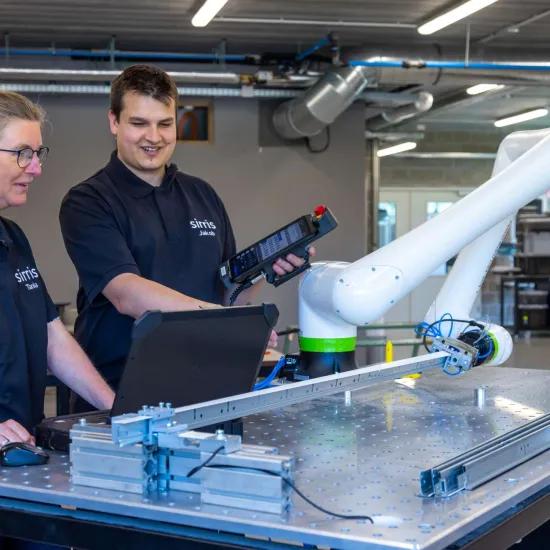Stay competitive, digitise your production - tips & tricks (Part 2)
It’s not just organisational improvements that can increase your competitiveness, so can digitising the various processes, including those involved in production. But how do you make the right choices? Successful digitisation starts with formulating objectives, and the typical customer demands are a good starting point for this.
The competitiveness of manufacturing industry in Flanders has been under pressure for years. The shift from mass production to smaller series of customer-specific products, the high labour costs, the geopolitical situation and the requirements of the Green Deal mean that manufacturing companies have to keep adapting to a changing situation. In addition to organisational improvements, digitising the various (production) processes offers a way to increase competitiveness. But how do you make the right choices? We can help you get on the right track.
Digitising production: where to start?
When you are convinced that digitisation can take you forward and the basic processes have been simplified and structured, as we set out in our article on simplifying before digitising, it is time to make choices. Which digitisation processes will be rolled out first? Which technology offers the most potential? Successful digitisation starts with formulating clear objectives that have a significant effect on the operating result. After all, the impact is only meaningful if it is tangible for the customers or if the work of the employees actually improves.
Start from customer requirements!
When formulating the objectives for your digitalisation, it is best to start from the customer's usual drivers: cost, quality, lead time, delivery reliability, variety and sustainability. Even though all these are important, a strategic choice must be made, based on questions such as ‘Which of these drivers do we want to take steps for?’ and ‘On which of these drivers do we want to distinguish ourselves from our competitors?’ (order qualifiers vs. order winners)? After a choice has been made, you can formulate concrete objectives for the selected drivers and look for the specific digital technologies for achieving them.
Fictional example
A company wants to differentiate itself by focusing very strongly on quality (within the context of customisation for customers). More specifically, it wants to increase the quality of its products by reducing the number of complaints from customers (about that product) by 10 percent. The company can now start an internal exercise to determine which quality problems occur (surface defects, products that do not work properly, etc.), how often and what the possible causes are (e.g., defective products due to incorrect assembly). In this way, the company can define the problem in more detail and collect the necessary data. It can then determine and evaluate the available solutions in terms of both organisation and technology. Evaluating the technological options is called a technology screening (more information about this can be found here).
In this example, one option would be to use digital work instructions that assist the operators during assembly so that the error burden is drastically reduced, which you can read more about in the following previously published article. As a next step, the work instructions could even be generated by an AI application that - using an analysis of the assembly operations carried out by the operators - creates an initial version of the digital work instructions that can then be incrementally improved.
Another route may be to digitise specific production steps. For example, the tool wear can be measured inline during machining so that a tool change can be carried out promptly, drastically improving the quality of the workpieces (read more about this here).
It is therefore possible to look for meaningful digitisations that solve a real problem or contribute to meeting a clearly defined objective.
Come to Manufacturing Day!
It is clear that digitalising production is an important challenge for manufacturing companies that wish to remain competitive. Successful digitisation starts with formulating clear objectives, for which you can then specifically look for the best (digital) technology. Does this all seem a bit much? Fortunately, many manufacturing companies have already taken concrete steps. On our Manufacturing Day, we will give the floor to various manufacturing companies that have successfully digitised their production, each with their specific challenges and solutions. Would you like to know more? Be sure to register!




